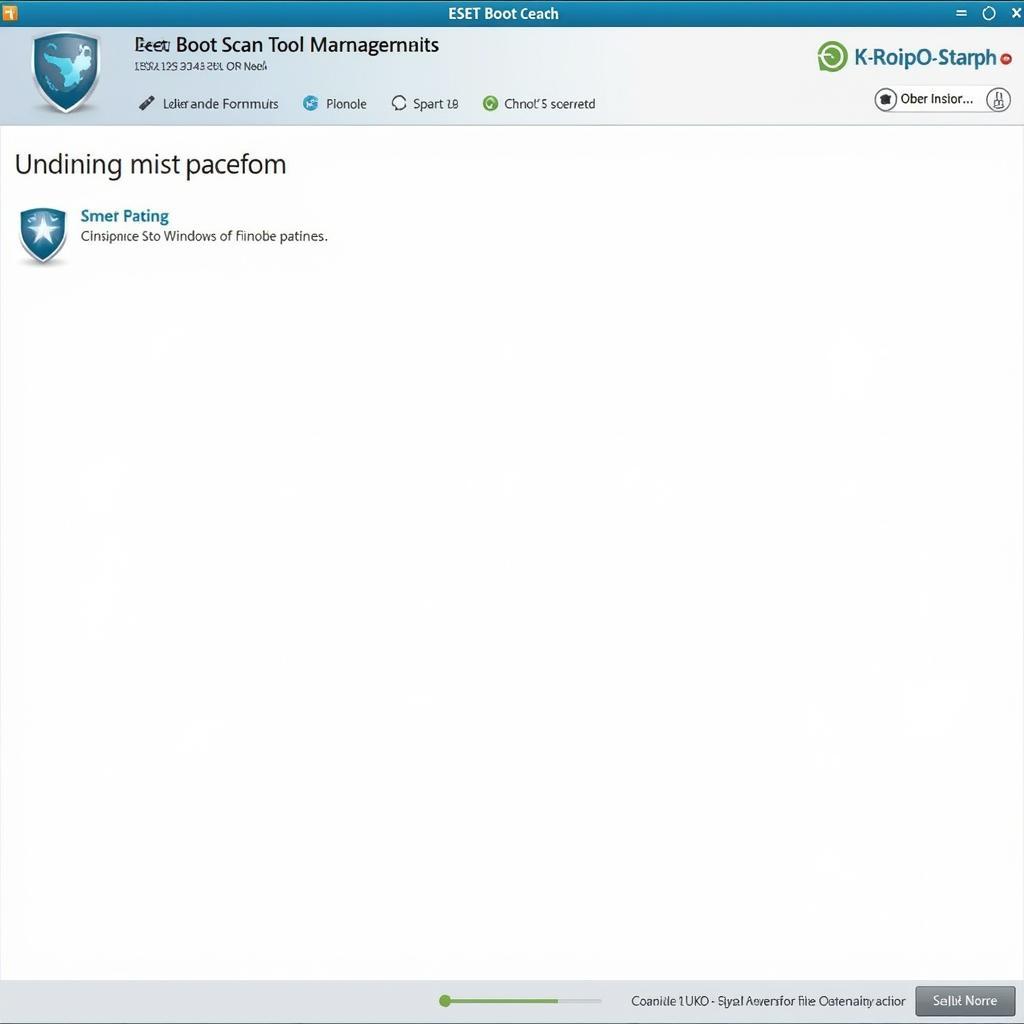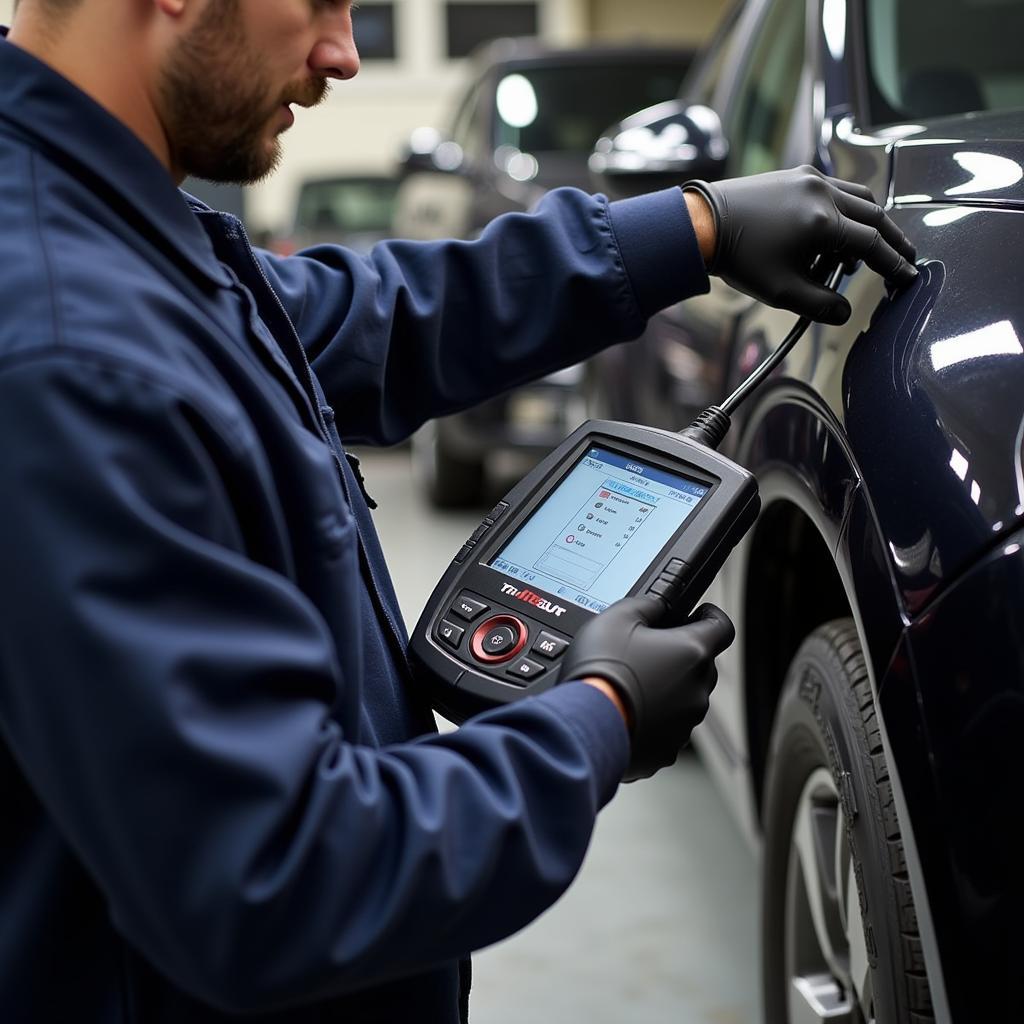In the realm of automotive diagnostics, a Car Fault Code Scanner acts as a digital detective, uncovering hidden truths about your vehicle’s health. Gone are the days of relying solely on mechanics to decipher cryptic warning lights. Today’s drivers can empower themselves with knowledge and take charge of their car maintenance with the help of these handy devices. This guide explores the ins and outs of car fault code scanners, arming you with the knowledge to understand your car’s language and make informed decisions about its care.
What Exactly is a Car Fault Code Scanner?
Imagine your car could speak. A car fault code scanner is the tool that translates its language. When your car’s computer detects a problem, it logs a specific code, essentially a digital distress signal. A code scanner reads these codes through the OBD-II port (usually located under the dashboard) and displays them in an understandable format.
Why Should I Consider Owning a Car Fault Code Scanner?
The benefits of owning a car fault code scanner are plentiful, extending beyond simply identifying a “check engine” light’s meaning. Here’s why it can be a game-changer:
- Early Detection and Prevention: Catch potential problems early, preventing costly repairs down the line.
- Cost Savings: Avoid unnecessary trips to the mechanic by diagnosing issues yourself.
- Transparency: Understand what’s going on with your car and make informed decisions about repairs.
- Enhanced Control: Feel empowered to tackle minor car maintenance tasks on your own.
- Peace of Mind: Enjoy the confidence of knowing you have a tool to quickly diagnose car troubles.
Navigating the World of Car Fault Code Scanners: Types & Features
Just as cars have evolved, so have their diagnostic tools. Here’s a look at common types of car fault code scanners:
1. Basic Code Readers:
These entry-level scanners provide a simple readout of fault codes. They’re a great starting point for DIYers on a budget.
2. Advanced OBD2 Scanners:
Offering a step up, these scanners provide more in-depth data, including live sensor readings, freeze frame data (a snapshot of the car’s status when the code was triggered), and emissions readiness status.
3. Professional-Grade Scanners:
As the name suggests, these are the tools used by professional mechanics. They offer the most comprehensive diagnostic capabilities, including bi-directional control (allowing you to activate certain car components), advanced coding and programming functions, and access to manufacturer-specific codes.
Choosing the Right Scanner: Finding Your Perfect Match
With a myriad of options available, selecting the ideal car fault code scanner can feel overwhelming. Consider these factors:
- Your Budget: Prices range widely, so determine how much you’re willing to spend.
- Your Skill Level: A basic code reader might suffice for casual users, while seasoned DIYers might prefer more advanced features.
- Your Car’s Make and Model: Some scanners are specifically designed for certain car brands, offering more specialized diagnostics.
- Desired Features: Prioritize the features that matter most to you, such as live data, emissions readiness, or bi-directional control.
Demystifying Fault Codes: What to Do When You Find One
Discovering a fault code can be unnerving, but remember, it’s not necessarily a reason to panic. Here’s a step-by-step approach:
- Record the Code: Jot down the alphanumeric code displayed on the scanner.
- Consult a Reliable Source: Use a reputable online database or repair manual to look up the code’s meaning. Websites like OBD-Codes.com offer comprehensive code definitions.
- Assess the Severity: Some codes indicate minor issues, while others point to more serious problems requiring immediate attention.
- Take Action: Depending on the code’s severity and your comfort level, you can either attempt a DIY repair or consult with a trusted mechanic.
“Knowing how to interpret fault codes gives you a significant advantage. It allows you to understand the problem, communicate effectively with mechanics, and potentially save money on unnecessary repairs.” – John Davis, Senior Automotive Technician
Beyond the Basics: Additional Uses for Your Car Fault Code Scanner
While diagnosing engine trouble is a primary function, car fault code scanners offer a broader range of applications:
- Resetting Warning Lights: After addressing an issue, you can use the scanner to clear the corresponding warning light on your dashboard.
- Monitoring Car Performance: Track live sensor data to monitor your car’s engine performance, fuel efficiency, and other crucial parameters.
- Verifying Repairs: After a mechanic visit, use your scanner to confirm that repairs have been completed successfully.
“Investing in a car fault code scanner is akin to having a personal mechanic at your fingertips. It empowers you to take control of your vehicle’s health and make informed decisions about its maintenance.” – Sarah Thompson, Automotive Engineer
Conclusion
Navigating the world of car maintenance can feel daunting, but armed with a car fault code scanner, you can approach it with confidence. This versatile tool empowers you to understand your vehicle’s needs, address issues proactively, and make informed decisions about its care.
Still have questions about car fault code scanners? Contact us at ScanToolUS at +1 (641) 206-8880 or visit our office at 1615 S Laramie Ave, Cicero, IL 60804, USA. We’re here to help you unlock the mystery of your car’s health!


